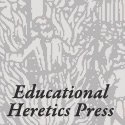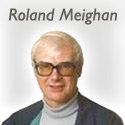Book Review
The Head’s Tale by Philip Toogood (1984).
Peter Humphreys
This book review forms part of many tributes to Philip Toogood’s life and career following his death in September 2013. Unfortunately, you’ll be extremely lucky to access a copy of The Head’s Tale unless you know someone with one. Although for readers with the cash when I last looked there were a couple available on Amazon at around £180!

The Head’s Tale
Philip Toogood (1984)
Dialogue Publications, Ironbridge, England
ISBN 0 946 649 40 5
I am ashamed to say until Philip’s death I had not read The Head’s Tale myself. Philip never circulated or sold them within CPE-PEN… I am indebted to Philip’s wife Annabel and son Rupert for loaning me their precious last copy.
When Philip Toogood resigned from Madeley Court Comprehensive in 1984 he did so in protest against the policy of his local education authority in Shropshire. He sat down, reflected and soon after wrote The Head’s Tale. One might be forgiven for anticipating a rhetorical counter attack from a disgruntled, embittered headteacher. In reality, this book is much more substantial than that. Philip was a man of great conviction, intellect and integrity and such rants would be beneath him. Instead, it charts the development of a teacher, his influences, his philosophy and a cogently argued case for the initiatives he embarked upon as headteacher with his team as head at Madeley Court.
More than this, the book actually opens a critical window on the educational contexts, policies and practices of post-war Britain. Having been a student of educational policy I can turn to no end of commentaries and texts charting the period, its shifts and defining moments, yet, few actually give such insight as those found in the Head’s Tale. Here, the policies and ramifications are translated to the raw, the personal and what it meant in practice. Indeed, I was amazed at what I’d forgotten and just what a political football education has continuously been. Philip’s book illustrates how schooling in England and Wales was inexorably moving towards what has subsequently become a highly controlled, policed and measured system having authoritarian characteristics beyond that found in the former USSR.
Philip knew the significance of what he was writing. In his Preface and Chapter 3 he accounts.
Rarely has the heart of “progressive”, comprehensive, community education been searchingly examined and defined, except in terms of access, resources and accountability. I hope “The Head’s Tale”, and the final chapter will begin to fill the gap.
Interestingly, my own secondary education was a ‘committal’ to the second largest ‘comprehensive’ school in the UK. A woefully soulless, impersonal experience of fear, bullying and utter anonymity in what can only be described as a schooling factory. Save for the spirit of a few young maverick teachers in open opposition to school’s ethos and hierarchy and their concern for the whole person the experience could have been even worse. Philip described how the comprehensive ideal was watered down and crystallised as an ‘all in one school’. This in turn led to settings where there would clear and obvious divisions in teaching and curriculum of the grammar (11+) streams and the ‘has beens’. I recognised this only too well in the 16-class year groups of my school and it really helped me reflect again about my own experiences. How I’d have warmed for a something like Philip’s minischooling and community education ideals.
I was reminded of the great leap forward made by many educational thinkers of the 60s and 70s. At the same time I was saddened. Through a combination of poor support, naivety, inept change management or political ambush so many innovative projects faltered, fizzled out or became so changed by the prevailing system as to be unrecognisable. In Philip’s case there was no doubt that he was politically ambushed. He had done most things right within the space and context he found himself in. However, he clearly got too close to something so right and so different from the status quo that the dominant paradigm could not really accommodate it. He was ahead of his time.
Philip was a pioneer and innovator but he was also building on the work and inspiration of others and his own learned experience. The 60s and 70s did bring a host of thinkers … Illich, Goodman, Friere, Hemming, Reimer, Holt, Rogers, Postman and Weingartner, Husen amongst many others. However, there were also earlier influences. Henry Morris (Director of Education, Cambridgeshire) elaborated the ideas of Village Colleges and community education. Philip embraced Morris’s 1925 Memorandum concerning the notion of a Village College where Morris set out its future
As the community centre of the neighbourhood it would provide for the whole man, abolish the duality of education and ordinary life. It would not be the training ground for the art of living but the place in which life was lived….It would be a visible demonstration in stone of the continuity and never ceasingness of education. There would be no leaving school! – the child would enter at three and leave college only in extreme old age. It would have the great virtue of being local so it would enhance the quality of life as it is lived from day to day – the supreme object of education.
Morris developed his vision extensively and the Community Education movement followed.
The Head’s Tale finishes Philip’s educational journey in 1984 with his resignation and this opportunity to set the records straight and give an account of his educational philosophy. He could already confidently state that…
The justification for “school” in its present form no longer exists. There is now no reason to take children into a large inhuman centre for 7 hours a day, 40 weeks a year, to be looked after and institutionalised by kindly teachers, – “parent substitutes”. We are depriving the community of its young.
… Dialogue, or engagement with reality, is the first move in the process of learning. The school should be a place where this engagement is made possible. It may not be so confined to a building to which children are consigned for a statutory period before being released for “life after school”, as it is now and has been for 100 years in the past. It may be that “school” should be redefined to suit the pursuit of knowledge in our altered circumstances of today. Maybe it should be less confined by walls. Essentially however, it should be a community within, and related to a, community in the wider society.
What happened since that time is equally remarkable and yet to be told in one place. Philip was, at the time of his death looking to update The Head’s Tale with volume called The Silver Lining. It would, I suspect go on and chart a less conventional educational career but a stunningly successful and groundbreaking one. To my knowledge no educationalist has ever experienced the scope and range of educational setting as Philip did. And, I do mean here experienced by doing. This was his key strength. Philip could talk and reflect in confidence and with credibility about public education, private education, about approved schools, grammar, bilateral, comprehensives, Village Colleges, parent co-operatives, home-based education, small schools, minischools, flexischooling and flexicolleges and more. He had intimate knowledge of the learning process of self-management, of co-creation, co-operative and democratic practice. He developed frameworks for Plan, do and review to support learners meeting their goals. He worked with some of the most challenged and disadvantaged learners and equally with a range of youngsters for whom just couldn’t cope with institutionalised settings. He had more experience, knowledge and skills than any teacher, minister or academic of his generation and beyond. He was himself widely read and well-educated. Truly, a life-long learner. It is, as I’ve suggested a unique, indeed outstanding journey that proved beyond doubt Philip was one of the few educators who really understood young people, learning and the characteristics of an education in the context of a healthy society. Philip not only thought about these things he practised and proved them.
One can only ponder what would have happened if Philip had been allowed to continue and develop his ideas at Madeley Court…we will never know. Nonetheless, in many ways the journey Philip subsequently took, freed from the constraints of state control and interference may actually have deepened our educational understanding further.
I have been fortunate in that Philip has been both a friend and colleague since our first connection at an inaugural Associate Directors Meeting for Education Now (the forerunner of Centre for Personalised Education – Personalised Education Now, CPE-PEN). I count him as a mentor and a primary influence on my own thinking. As we’d both been headteachers I think we felt a special affinity and common understanding. We both tried and succeeded to push the innovation window as far as we could in an effort to create something better for our learners, families and communities. Of that we can be enormously proud. I continued to learn much about Philip’s post-1984 educational journey with his wife Annabel at his side. Philip was able to support CPE-PEN develop our own vision and he will always be at the heart of who and what we are and will be.
In due course we will complete the full story of Philip’s educational career and the true extent of the vision, practice and skills of this remarkable educator. In the meantime if you can locate a copy of The Head’s Tale you will be rewarded by the read.
P.S. Since writing this review I kept looking on Amazon and have eventually secured my own copy the Philip’s book at £10!





Home » Book Review – The Head’s Tale by Philip Toogood (1984).
Book Review – The Head’s Tale by Philip Toogood (1984).
Books & Reviews, CPE / PEN News and Comment, E-briefing · Tagged: A Head's Tale, CPE-PEN, Dialogue Publications, Education Now, Peter Humphreys, Philip Toogood
Book Review
The Head’s Tale by Philip Toogood (1984).
Peter Humphreys
This book review forms part of many tributes to Philip Toogood’s life and career following his death in September 2013. Unfortunately, you’ll be extremely lucky to access a copy of The Head’s Tale unless you know someone with one. Although for readers with the cash when I last looked there were a couple available on Amazon at around £180!
The Head’s Tale
Philip Toogood (1984)
Dialogue Publications, Ironbridge, England
ISBN 0 946 649 40 5
I am ashamed to say until Philip’s death I had not read The Head’s Tale myself. Philip never circulated or sold them within CPE-PEN… I am indebted to Philip’s wife Annabel and son Rupert for loaning me their precious last copy.
When Philip Toogood resigned from Madeley Court Comprehensive in 1984 he did so in protest against the policy of his local education authority in Shropshire. He sat down, reflected and soon after wrote The Head’s Tale. One might be forgiven for anticipating a rhetorical counter attack from a disgruntled, embittered headteacher. In reality, this book is much more substantial than that. Philip was a man of great conviction, intellect and integrity and such rants would be beneath him. Instead, it charts the development of a teacher, his influences, his philosophy and a cogently argued case for the initiatives he embarked upon as headteacher with his team as head at Madeley Court.
More than this, the book actually opens a critical window on the educational contexts, policies and practices of post-war Britain. Having been a student of educational policy I can turn to no end of commentaries and texts charting the period, its shifts and defining moments, yet, few actually give such insight as those found in the Head’s Tale. Here, the policies and ramifications are translated to the raw, the personal and what it meant in practice. Indeed, I was amazed at what I’d forgotten and just what a political football education has continuously been. Philip’s book illustrates how schooling in England and Wales was inexorably moving towards what has subsequently become a highly controlled, policed and measured system having authoritarian characteristics beyond that found in the former USSR.
Philip knew the significance of what he was writing. In his Preface and Chapter 3 he accounts.
Rarely has the heart of “progressive”, comprehensive, community education been searchingly examined and defined, except in terms of access, resources and accountability. I hope “The Head’s Tale”, and the final chapter will begin to fill the gap.
Interestingly, my own secondary education was a ‘committal’ to the second largest ‘comprehensive’ school in the UK. A woefully soulless, impersonal experience of fear, bullying and utter anonymity in what can only be described as a schooling factory. Save for the spirit of a few young maverick teachers in open opposition to school’s ethos and hierarchy and their concern for the whole person the experience could have been even worse. Philip described how the comprehensive ideal was watered down and crystallised as an ‘all in one school’. This in turn led to settings where there would clear and obvious divisions in teaching and curriculum of the grammar (11+) streams and the ‘has beens’. I recognised this only too well in the 16-class year groups of my school and it really helped me reflect again about my own experiences. How I’d have warmed for a something like Philip’s minischooling and community education ideals.
I was reminded of the great leap forward made by many educational thinkers of the 60s and 70s. At the same time I was saddened. Through a combination of poor support, naivety, inept change management or political ambush so many innovative projects faltered, fizzled out or became so changed by the prevailing system as to be unrecognisable. In Philip’s case there was no doubt that he was politically ambushed. He had done most things right within the space and context he found himself in. However, he clearly got too close to something so right and so different from the status quo that the dominant paradigm could not really accommodate it. He was ahead of his time.
Philip was a pioneer and innovator but he was also building on the work and inspiration of others and his own learned experience. The 60s and 70s did bring a host of thinkers … Illich, Goodman, Friere, Hemming, Reimer, Holt, Rogers, Postman and Weingartner, Husen amongst many others. However, there were also earlier influences. Henry Morris (Director of Education, Cambridgeshire) elaborated the ideas of Village Colleges and community education. Philip embraced Morris’s 1925 Memorandum concerning the notion of a Village College where Morris set out its future
As the community centre of the neighbourhood it would provide for the whole man, abolish the duality of education and ordinary life. It would not be the training ground for the art of living but the place in which life was lived….It would be a visible demonstration in stone of the continuity and never ceasingness of education. There would be no leaving school! – the child would enter at three and leave college only in extreme old age. It would have the great virtue of being local so it would enhance the quality of life as it is lived from day to day – the supreme object of education.
Morris developed his vision extensively and the Community Education movement followed.
The Head’s Tale finishes Philip’s educational journey in 1984 with his resignation and this opportunity to set the records straight and give an account of his educational philosophy. He could already confidently state that…
The justification for “school” in its present form no longer exists. There is now no reason to take children into a large inhuman centre for 7 hours a day, 40 weeks a year, to be looked after and institutionalised by kindly teachers, – “parent substitutes”. We are depriving the community of its young.
… Dialogue, or engagement with reality, is the first move in the process of learning. The school should be a place where this engagement is made possible. It may not be so confined to a building to which children are consigned for a statutory period before being released for “life after school”, as it is now and has been for 100 years in the past. It may be that “school” should be redefined to suit the pursuit of knowledge in our altered circumstances of today. Maybe it should be less confined by walls. Essentially however, it should be a community within, and related to a, community in the wider society.
What happened since that time is equally remarkable and yet to be told in one place. Philip was, at the time of his death looking to update The Head’s Tale with volume called The Silver Lining. It would, I suspect go on and chart a less conventional educational career but a stunningly successful and groundbreaking one. To my knowledge no educationalist has ever experienced the scope and range of educational setting as Philip did. And, I do mean here experienced by doing. This was his key strength. Philip could talk and reflect in confidence and with credibility about public education, private education, about approved schools, grammar, bilateral, comprehensives, Village Colleges, parent co-operatives, home-based education, small schools, minischools, flexischooling and flexicolleges and more. He had intimate knowledge of the learning process of self-management, of co-creation, co-operative and democratic practice. He developed frameworks for Plan, do and review to support learners meeting their goals. He worked with some of the most challenged and disadvantaged learners and equally with a range of youngsters for whom just couldn’t cope with institutionalised settings. He had more experience, knowledge and skills than any teacher, minister or academic of his generation and beyond. He was himself widely read and well-educated. Truly, a life-long learner. It is, as I’ve suggested a unique, indeed outstanding journey that proved beyond doubt Philip was one of the few educators who really understood young people, learning and the characteristics of an education in the context of a healthy society. Philip not only thought about these things he practised and proved them.
One can only ponder what would have happened if Philip had been allowed to continue and develop his ideas at Madeley Court…we will never know. Nonetheless, in many ways the journey Philip subsequently took, freed from the constraints of state control and interference may actually have deepened our educational understanding further.
I have been fortunate in that Philip has been both a friend and colleague since our first connection at an inaugural Associate Directors Meeting for Education Now (the forerunner of Centre for Personalised Education – Personalised Education Now, CPE-PEN). I count him as a mentor and a primary influence on my own thinking. As we’d both been headteachers I think we felt a special affinity and common understanding. We both tried and succeeded to push the innovation window as far as we could in an effort to create something better for our learners, families and communities. Of that we can be enormously proud. I continued to learn much about Philip’s post-1984 educational journey with his wife Annabel at his side. Philip was able to support CPE-PEN develop our own vision and he will always be at the heart of who and what we are and will be.
In due course we will complete the full story of Philip’s educational career and the true extent of the vision, practice and skills of this remarkable educator. In the meantime if you can locate a copy of The Head’s Tale you will be rewarded by the read.
P.S. Since writing this review I kept looking on Amazon and have eventually secured my own copy the Philip’s book at £10!
share:
About the author
Related Posts
Centre for Personalised Education Fact Sheet: ‘What should I do if my child’s other parent doesn’t want me to home educate him?
Centre for Personalised Education Fact Sheet: 'What should I do if my child's other parent doesn't want me
Home Education – Frequently Asked Questions. Centre for Personalised Education Advice.
Home Education - Frequently Asked Questions.
Centre for Personalised Education Advice.
Home
Centre for Personalised Education eNews 12th June 2019
Get the latest eNews from the Centre for Personalised Education here:
Centre for Personalised Education eNews
DfE Consultation on ‘Children not in School’ Centre for Personalised Education Response
The DfE Consultation on Children not in School Closes 24 June 2019.
This is
CPE Communications June 2019